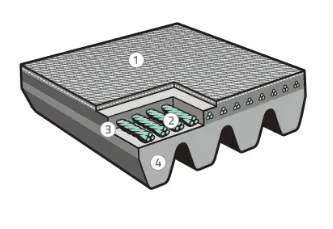- Arabic
- French
- Russian
- Spanish
- Portuguese
- Turkish
- Armenian
- English
- Albanian
- Amharic
- Azerbaijani
- Basque
- Belarusian
- Bengali
- Bosnian
- Bulgarian
- Catalan
- Cebuano
- Corsican
- Croatian
- Czech
- Danish
- Dutch
- Afrikaans
- Esperanto
- Estonian
- Finnish
- Frisian
- Galician
- Georgian
- German
- Greek
- Gujarati
- Haitian Creole
- hausa
- hawaiian
- Hebrew
- Hindi
- Miao
- Hungarian
- Icelandic
- igbo
- Indonesian
- irish
- Italian
- Japanese
- Javanese
- Kannada
- kazakh
- Khmer
- Rwandese
- Korean
- Kurdish
- Kyrgyz
- Lao
- Latin
- Latvian
- Lithuanian
- Luxembourgish
- Macedonian
- Malgashi
- Malay
- Malayalam
- Maltese
- Maori
- Marathi
- Mongolian
- Myanmar
- Nepali
- Norwegian
- Norwegian
- Occitan
- Pashto
- Persian
- Polish
- Punjabi
- Romanian
- Samoan
- Scottish Gaelic
- Serbian
- Sesotho
- Shona
- Sindhi
- Sinhala
- Slovak
- Slovenian
- Somali
- Sundanese
- Swahili
- Swedish
- Tagalog
- Tajik
- Tamil
- Tatar
- Telugu
- Thai
- Turkmen
- Ukrainian
- Urdu
- Uighur
- Uzbek
- Vietnamese
- Welsh
- Bantu
- Yiddish
- Yoruba
- Zulu
Nov . 27, 2024 04:04 Back to list
Understanding the Role and Importance of Car Engine Belts for Vehicle Performance
Understanding Car Engine Belts A Comprehensive Guide
Car engines are marvels of engineering, composed of numerous components that work in harmony to provide the power needed for a smooth driving experience. Among these vital components are engine belts, which play a crucial role in the overall functioning of your vehicle. In this article, we’ll dive into the functions, types, maintenance, and replacement of car engine belts.
What Are Engine Belts?
Engine belts are flexible loops made of rubber or other materials that connect various components of a vehicle's engine. They transmit power from the crankshaft to accessories like the alternator, water pump, power steering pump, and air conditioning compressor. The efficient operation of these accessories ensures that the engine runs smoothly and efficiently.
Types of Engine Belts
There are primarily three types of engine belts in most vehicles
1. Serpentine Belt This is a long, continuous belt that winds through multiple pulleys. Its design allows it to drive several accessories simultaneously, making it an efficient option. Most modern cars use a serpentine belt due to its streamlined design and reduced number of components.
2. Timing Belt Unlike the serpentine belt, the timing belt is critical for engine timing. It connects the crankshaft to the camshaft, ensuring that the engine's valves open and close at the precise moments in relation to the position of the pistons. A timing belt plays an essential role in maintaining the synchronicity of the engine's internal operations.
3. V-Belt Traditional vehicles often use V-belts, which are named for their V-shaped cross-section. These belts are designed to operate individually, which can make replacement easier but less efficient than a serpentine belt system.
The Importance of Engine Belts
car engine belt

The efficiency of a car's engine relies heavily on its belts. A malfunctioning belt can lead to a series of problems. A broken serpentine belt can result in the loss of power steering, overheating engine due to a non-functional water pump, and failure of the alternator to charge the battery. On the other hand, a failing timing belt can lead to severe engine damage, potentially resulting in costly repairs or complete engine failure.
Signs of Wear and Tear
To ensure the longevity of your engine belts, it's important to regularly inspect them for signs of wear and tear. Common indicators of a problematic belt include
- Cracking or Fraying Visible cracks or frayed edges are signs that the belt has deteriorated and may soon fail. - Squeaking Noises A high-pitched squeal when starting the car could indicate that the serpentine belt is slipping. - Overheating Engine If the water pump is not functioning due to a belt failure, the engine may overheat.
Maintenance and Replacement
Routine maintenance of engine belts is essential to avoid unexpected breakdowns. It's advisable to consult your vehicle’s owner manual for specific recommendations regarding belt inspection and replacement intervals. Most manufacturers recommend checking the belts every 30,000 to 60,000 miles, depending on the vehicle model and driving conditions.
When replacing an engine belt, it’s crucial to ensure that the new belt is installed correctly. Misalignment can lead to premature wear and potential damage to the engine components. If you’re unsure about the installation process, consulting a professional mechanic is wise.
Conclusion
Engine belts, though often overlooked, are integral components that contribute significantly to your vehicle's performance and reliability. Understanding their functions, types, and maintenance can help you stay ahead of potential issues and ensure that your car operates smoothly. Regular inspections and timely replacements of worn belts will not only enhance the longevity of your vehicle but also promote a safer driving experience. Always remember that prevention is better than cure, making attention to these small but critical parts a priority for any responsible car owner.
-
Upgrade Power Steering Pump Belt for Smooth, Quiet Operation
NewsAug.27,2025
-
Precision Timing Belt & Chain: Engine Performance & Durability
NewsAug.26,2025
-
Precision Lathe Drive Belts: Durable & Reliable Performance
NewsAug.25,2025
-
84.5 Serpentine Belt: Durable & Precision Fit for Your Engine
NewsAug.24,2025
-
Premium Ribbed Drive Belts for Quiet Power Transmission
NewsAug.23,2025
-
High-Performance Vehicle Timing Belt for Engine Precision
NewsAug.22,2025

